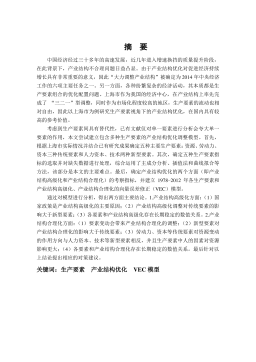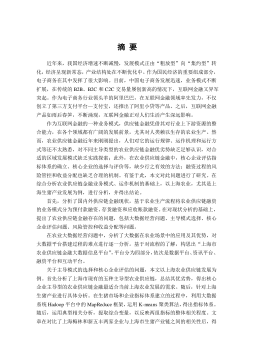振动时效技术研究
摘要现代工业生产中,由于工件生产过程中产生的残余应力会直接影响工件的质量和性能,甚至影响到工件组成的设备或系统的安全,因而,如何消除或降低工件内的残余应力就成为涉及生产安全的一项重要内容。振动时效技术作为一种成本低廉、适用性强、节能环保并可提高被消振工件机械性能的新型应力消除技术,目前已广泛应用于铸造、锻造、模具、焊接等相关行业。因此,深入研究振动时效技术、开发高效节能、自动化和智能化程度高的振动时效装置对于提高工业化生产水平具有重要的现实意义。本文在对振动时效的机理和工艺进行深入分析的基础上,设计一套由计算机控制,具有自动或手动扫频、定频的多工作模式振动时效装置。依据国家标准JB/T5925...
相关推荐
-
我国基层财政困难的制度成因分析与对策研究VIP免费

 2024-09-20 33
2024-09-20 33 -
我国煤电产业链纵向交易合约机制研究VIP免费

 2024-09-20 28
2024-09-20 28 -
生产要素视角下的上海市产业结构优化研究VIP免费

 2025-01-09 7
2025-01-09 7 -
我国银行业结构与经济结构关系研究VIP免费

 2025-01-09 7
2025-01-09 7 -
大数据视角下农业供应链金融研究VIP免费

 2025-01-09 6
2025-01-09 6 -
跨国大型综合超市的规划研究VIP免费

 2025-01-09 6
2025-01-09 6 -
跨境电商农产品质量安全问题研究VIP免费

 2025-01-09 7
2025-01-09 7 -
世界市场的虚拟化与我国国际电子商务发展方向研究VIP免费

 2025-01-09 9
2025-01-09 9 -
中国政府对电力行业的价格规制问题研究VIP免费

 2025-01-09 13
2025-01-09 13 -
中小企业信息化系统集成技术研究VIP免费

 2025-01-09 13
2025-01-09 13
相关内容
-

跨国大型综合超市的规划研究
分类:高等教育资料
时间:2025-01-09
标签:无
格式:PDF
价格:15 积分
-

跨境电商农产品质量安全问题研究
分类:高等教育资料
时间:2025-01-09
标签:无
格式:PDF
价格:15 积分
-

世界市场的虚拟化与我国国际电子商务发展方向研究
分类:高等教育资料
时间:2025-01-09
标签:无
格式:PDF
价格:15 积分
-

中国政府对电力行业的价格规制问题研究
分类:高等教育资料
时间:2025-01-09
标签:无
格式:PDF
价格:15 积分
-

中小企业信息化系统集成技术研究
分类:高等教育资料
时间:2025-01-09
标签:无
格式:PDF
价格:15 积分





